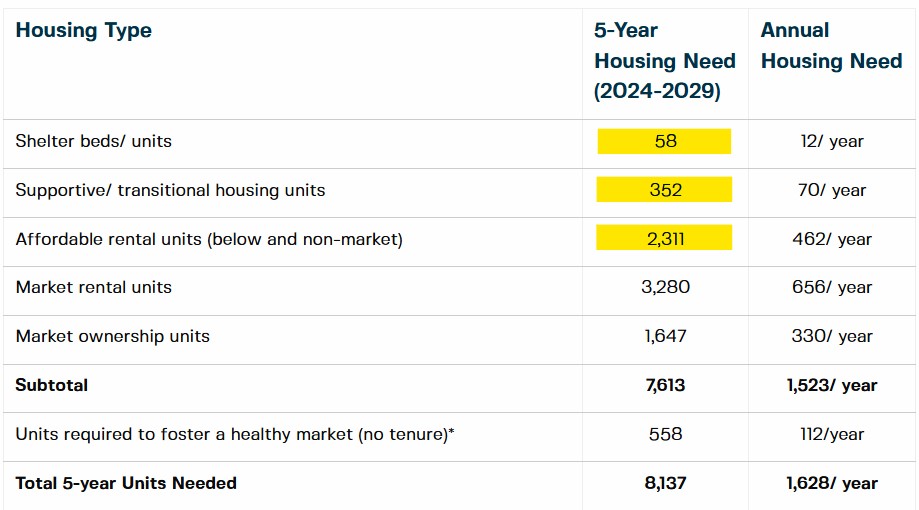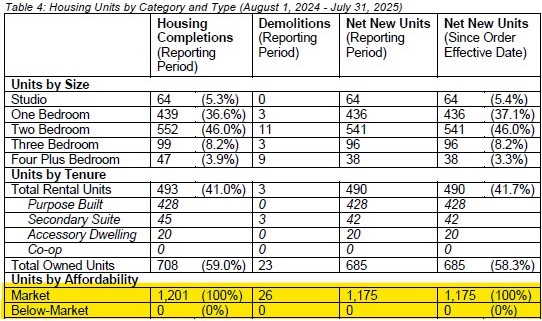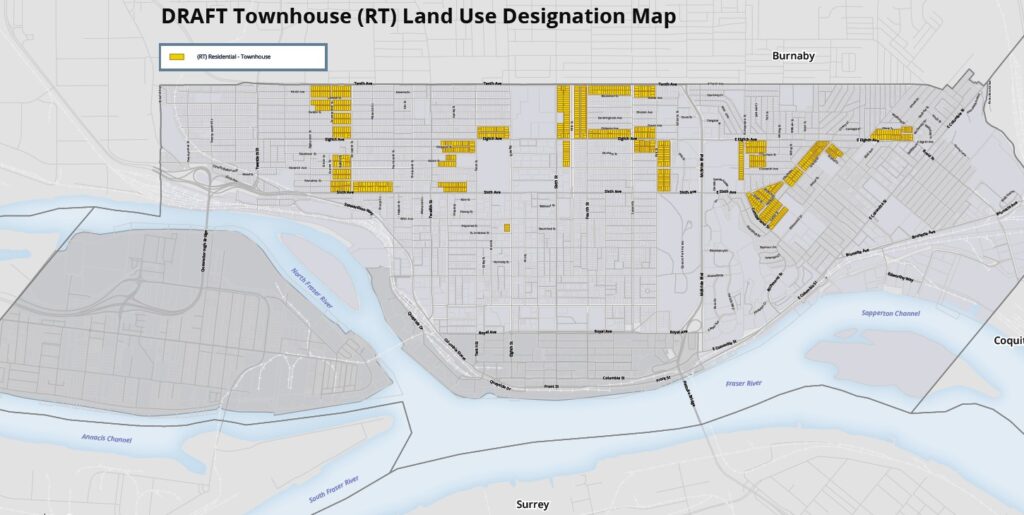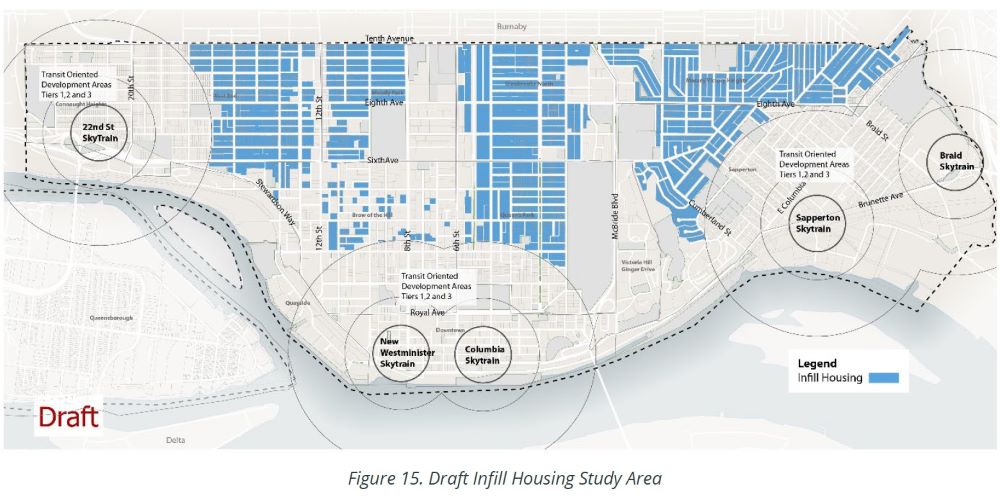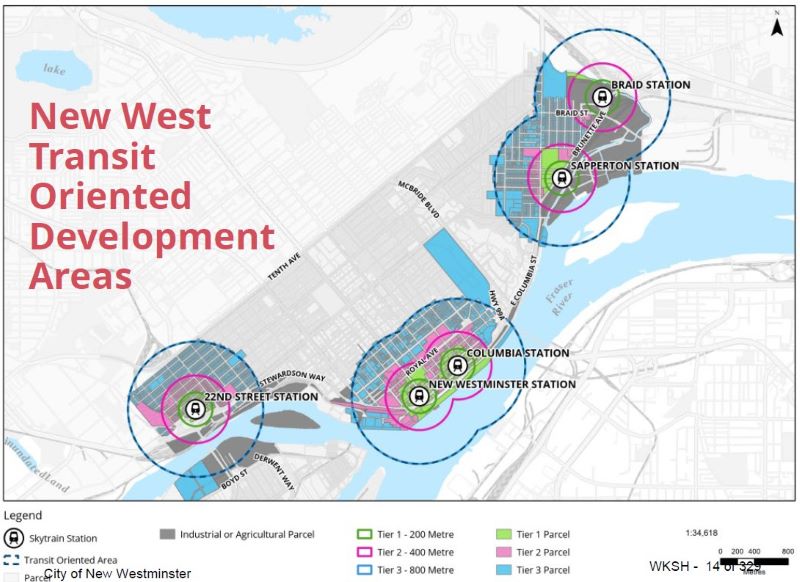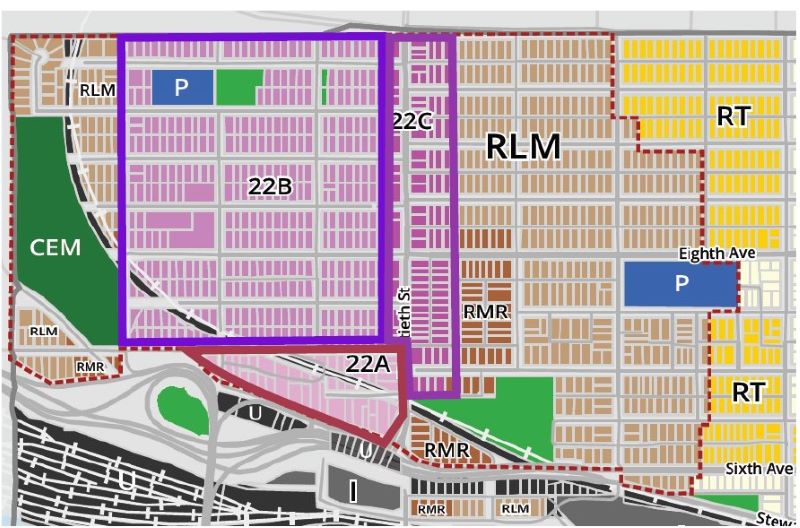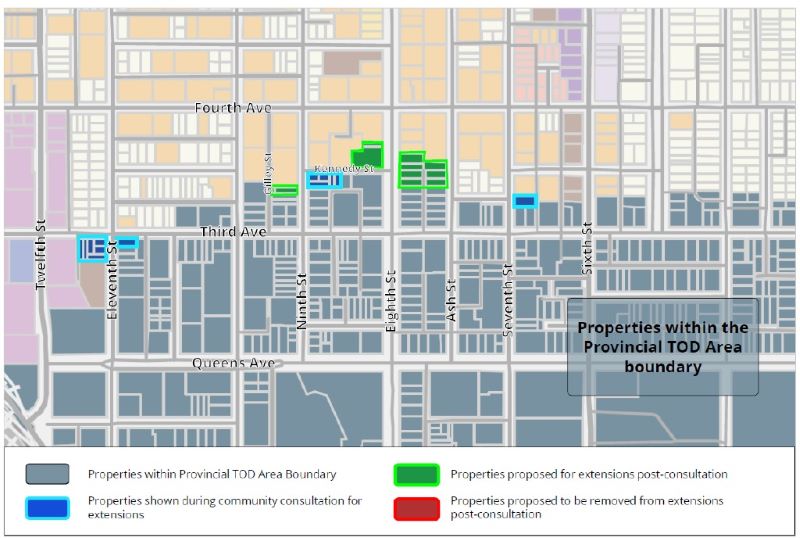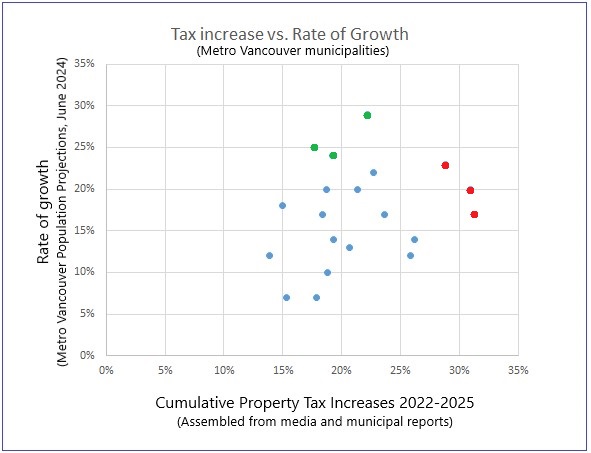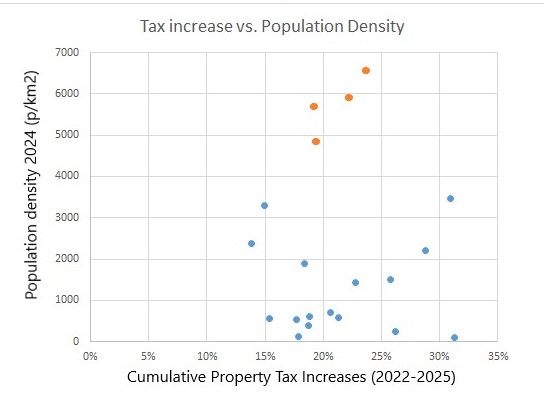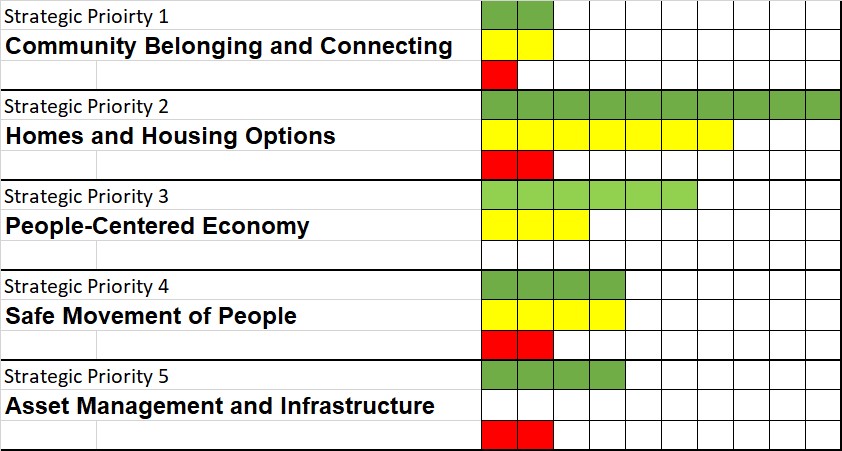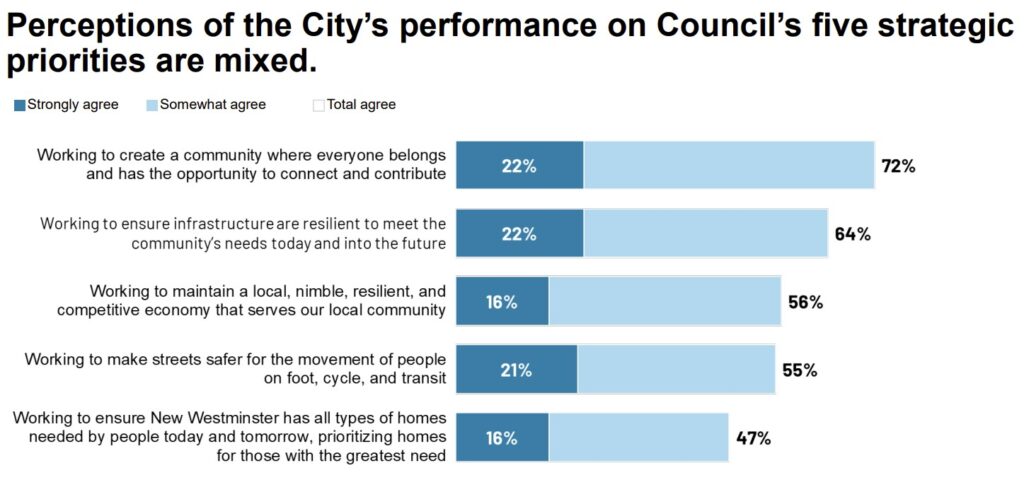September’s first meeting continued our tradition of holding one fall meeting in Queensborough every year. It is a bit of a logistical challenge, and if you watch the video you see us managing as best we can with unfamiliar tech and layout, but I think staff did a great job in supporting us and it was good to see a full Queensborough audience at the event.
There is also something nice about holding a Council meeting in a room with floor-to-ceiling windows overlooking a green park with young families and seniors walking by and kids playing on the playground equipment. It reminds you of the work we do, and how it impacts people’s daily lives, even if they don’t realize we are doing it right now on the other side of that window.
Our agenda started with the following items Moved on Consent:
Construction Noise Bylaw Exemption Request: 220 Salter Street (Metro Vancouver Sewer Inspection – Fraser River Crossing Project)
There are major regional sewer lines under Salter Street, and they need nighttime (when the water is low) inspection, which requires a construction noise exemption for two weeknights, which Council is granting.
2024-2034 UBCM Canada Community Works Fund Agreement
The City will be getting a grant of about $160K to support infrastructure investment in the City, but need to sign this agreement to get the cash, and agree to spend it on qualifying projects as per the agreement. Easiest grant ever.
We then had these following items that were Removed from Consent for Discussion:
2025 Permissive Property Tax: Exempt Properties – Review of Application Result
There are two types of properties that are exempt from Property Taxes – Statutory and Permissive. The first are by Provincial Law, and are why most churches and private schools are exempt. The second are at the pleasure of the Local Government, land use we can choose as a City to exempt from property taxes. These could include social housing, sports clubs, social service not-for profits, and the such. They must apply every year, and in my time on Council, we have not added many to the list of permissive exemptions, though we often get new applications. As a policy, the City directs not-for-profits to the City’s generous grant program if they need financial support, as that is a more accountable process.
The current list of permissive exemptions equals about $1 Million (this is reported every year as part of our annual report), and this year we got applications for 6 more, totaling $244,000 more. Two new applications (both established church properties with new congregations) totaling about $30,000 were added to the list of exemptions as per the established policy.
Budget 2025: Fees and Rates Review
As a normal part of our annual Budget process, we need to set fee bylaws fort next year. This has to happen early, because financial modelling of cost recovery is part of what informs the rest of the budget, and cost recovery is obviously impacted by fees. If we reduce business license fees, for example, that’s not “free”, it impacts the tax rates we need to charge next year. Most rates are adjusted annually to meet CPI, as a proxy for what I costs us to deliver the service, and to avoid larger and more intermittent price spikes. CPI estimate this year is 3.0%.
There are others that need bigger adjustments, like the cost of providing brass plaques for the cemetery have gone up quite a bit, requiring a 24% increase to recover those costs. Others have external controls, such as our towing charges being set by ICBC. Yet other fees are adjusted to align to market conditions (on street parking not going up this year, short-term parkade parking rates going up a bit due to demand increases), and yet other being shifted to better align with regional municipal comparators (e.g. Fire Safety Plan Review fees).
All told, these changes average aout to about a 3% increase, driving an extra $450k in revenue. For context, $450K is about as much revenue as we would draw from a 0.4% property tax increase.
Business License Bylaw Modernization Update
Staff have been working on a Business License Bylaw update for some time now. Not just looking at fees, but making sure our approach to issuing licenses reflects the modern reality of the local business community. Business license counts are way up, we issue almost 4,000 a year, which is about 20% more than Pre-COVID 2019. Still, staff want to streamline the license process, remove outdated requirements, and provide more flexibility for start-up businesses so it is easier to start a business in New West. Regular readers will also remember that a comparison with surrounding municipalities was conducted and changes to the fee schedule are proposed to align better with regional trends.
There has already been several stages of engagement with the business community here, but there will be another check-in now that proposed changes have been developed. This report simply to update Council before it went out to consultation, and to check in for any red flags.
Response to Council Motion Regarding “Tenant Protections”
As per a motion put forward in a previous meeting, staff are going to update our tenant protection measures. There is an ongoing rental affordability crisis, and recent changes to provincial housing regulations may result in increased pressure to demolish and re-develop our most affordable rentals, which puts a lot people in a very precarious situation. Alongside this the Province has brought in new tenant protection powers through Bill 16. It’s time to update our progressive-in-2015 Tenant Relocation Policy to assure we don’t exacerbate the homelessness crisis.
We then had several Motions from Council (not necessarily in this order, as we delayed a couple until after Public Delegations because we had people come to speak to Council in favour of a few motions).
Regulate the Unsolicited Distribution of Graphic Images Depicting a Fetus
Submitted by Councillor Campbell and Councillor Henderson
WHEREAS New Westminster residents have expressed concerns that unsolicited flyers showing graphic images of aborted fetuses are being delivered to homes and causing harm; and
WHEREAS a number of Canadian municipalities in Alberta and Ontario have established bylaws that; and
WHEREAS in accordance with British Columbia’s Community Charter, Section 8 (3) (i) A council may, by bylaw, regulate, prohibit and impose requirements in relation to public health; and
THEREFORE BE IT RESOLVED THAT that staff provide council with proposed bylaw amendments to require all print collateral delivered to any premises or distributed to the public that shows, or appear to show, a graphic image of a fetus be delivered in a sealed opaque envelope with a graphic content warning, identify the name and address of the sender, and include measures to ensure individuals are not inadvertently exposed to graphic content on a leaflet, pamphlet, paper, booklet, postcard, or any other printed collateral.
This motion was driven by calls form the community we have received a few times over the last few years. I don’t have much to add to the wording above, except that this is just the beginning of a bit of a process Staff will have to go through to determine what our legal abilities are here, and how best to structure a bylaw so it is effective. I don’t know if anyone in BC has done this before, though local governments have been successful in Ontario and Alberta, so we will need to find a local context that fits with our Community Charter and Local Government Act. This was supported by all of Council, so more to come!
Lower Mainland Local Government Association Tracking and Reporting of Votes on Motions and Resolutions
Submitted by Councillor Nakagawa
WHEREAS Local Government Associations, the Union of BC Municipalities, and the Federation of Canadian
Municipalities advocate for issues that impact their member municipalities; and
WHEREAS municipal Mayors and Councillors are financially supported to attend these conferences in order
to advocate on behalf of their local constituents, yet there is no way for constituents to know how their elected representatives vote on motions and resolutions,
THEREFORE, BE IT RESOLVED THAT the City of New Westminster submit the following resolution to the Lower Mainland Local Government Association:
“THEREFORE BE IT RESOLVED THAT the Lower Mainland Local Government Association begins tracking and reporting how attendees vote on motions and resolutions and that they submit a motion to UBCM and FCM advocating for those organizations to do the same.”
Your local government is represented at these regional meetings by elected members of Council, and advocate to senior government for policy changes. It is probably a good idea for you to know what your local elected officials are advocating for – or against. It seems like a good step towards improving transparency and accountability. There are some technical challenges that might be easiert to solve at the relatively small Lower Mainland LGA than the much larger UBCM and FCM, and it will involve some investment of resources by those parties, so it is appropriate to structure this as a request for those organizations to evaluate if that is something they want to do. Council moved to approve this.
Selecting an Inclusive and Accessible Site for the 2025 Canada Day Celebration and Festivities
Submitted by Councillor Minhas
WHEREAS Canada Day offers the City of New Westminster an opportunity to celebrate and bring residents together in celebration and reflection; and
WHEREAS the Pier Park location for Canada Day festivities currently offers little opportunity for shade on hot days which often occur in early July; and
WHEREAS Queen’s Park has played host to previous Canada Day celebrations and offers more opportunities to keep participants cool on hot summer days;
BE IT RESOLVED THAT staff seek feedback from the public through our Be Heard system regarding their preference for the 2025 Canada Day festivities and celebrations; and
BE IT FURTHER RESOLVED THAT several locations across the City be offered to the public as a potential site for the 2025 Canada Day festivities including at least one site in Queensborough.
This was a bit of a complicated conversation as Council got a bit into the weeds, but it was nonetheless a good discussion that will hopefully lead to a good community discussions, and I think the direction is clearer with some amendments.
Be Heard New West is part of a community engagement toolbox, not a public survey tool. As Councillor Nakagawa said, “Public Engagement isn’t just asking if a hotdog is a sandwich”, it is a process of sharing information and asking for feedback in ways that have meaningful input into decision making. The decision by Council was to have staff report back with resource needs to do a proper engagement on this.
There was a bit of preemptive discussion about locations as well. There is a complex history why the “main”
Canada Day program moved from Queens Park to Pier Park, and those decisions were made in consultation with the many partners that are required to make the event happen. In the pre-COVID times we got to a point where there were two locations, with some overlap. Post-COVID the Pier Park location became the primary location, and the numbers reflected a much higher interest in people being there than Pier Park (thousands instead of hundreds in attendance). However, it is important to note that Pier Park festivities were not the only events coordinated by the City at Canada Day in 2024. There were activations all long weekend in Queensborough, at Queens Park, at the Anvil, and other locations.
Finally, The City’s festivals budget is fairly limited, and massive expansions of the event would require budget decisions, and increased staff resources. Many events in the City are primarily run by partners (Uptown Live, Pride, Hyack Parade and Festival, Fridays on Front, etc.) with some significant City support, but City-run events have been pretty limited to “civic” dates, like Remembrance Day (our largest City-run event), Canada Day and Truth and Reconciliation day, where partners support the City more than vice-versa. But it is clearly a spectrum between the two end members here.
Anyway, this will be an ongoing discussion. Let us know what you think!
Increasing Openness and Transparency at City Hall by Registering Lobbyist Activities
Submitted by Councillor Fontaine
WHEREAS lobbyist registries are intended to provide a public record that is accessible to residents of interactions between public servants, elected officials and lobbyists and to allow for rules regarding lobbyists to be enforced; and
WHEREAS British Columbia does not currently allow municipalities to use the provincial lobbyist registry nor does it extend the legal authorities municipalities would need to enforce lobbyist rules with a local registry; and
WHEREAS it is important for a functional local democracy that any lobbying efforts by entities such as corporations, labour unions, foreign governments or other similar foreign-based organizations be recorded and publicly reported in a timely manner
THEREFORE BE IT RESOLVED THAT the City request the Province immediately take one of the following two actions:
The Province amend the Lobbyist Registration Act to cover the City of New Westminster and other similar mid-to-large-sized cities and administer the regulation of lobbying in the city; OR,
The Province amend the Community Charter to allow the City to establish a lobbyist registry and give the City the legal authority to register lobbyists, create rules for lobbyists’ conduct in their interactions with elected officials and public servants, as well as the power to enforce those rules. In addition, the Province further empower the Provincial Registrar of Lobbyists to work with the City to share information so as to reduce duplication and costs for both orders of government.
This was also a good discussion, and it was clear that everyone saw transparency and accountability as ideas worth supporting. There was a bit of procedural adjustment (to add this as an advocacy issue to the Lower Mainland LGA along with a letter to the province), but all in the interest in making our call for this louder.
I raised some concern about the difference between local politics and provincial/federal politics, and the need for us to clearly define what Lobbying is. I have dozens of conversations every week with people nt he community, residents, business operators, non-profits, and most some include discussions of City Bylaws or policies or practices. I would hate to think that every time I set up the Ask Pat booth at the Farmers Market that I would need everyone who asks me a question to register as a lobbyist. That said, there are clearly a few meetings I do have with people or organizations who are paid to advocate to me and fit the strict definition of Lobbyist. I just wonder if we can clearly draw a line between those two without finding exampled that straddle that line. So we have work to do there.
Finally, I added an amendment that asked that we engage the City’s new Ethics Commissioner, and ask them to report back on potential procedures or practices we could adopt as a form of practice disclosure for when we are being lobbied. I think the public is less interested in reading the names of lobbyists, and are more interested in what meetings we are taking and the purpose of those meetings.
So, more to come on that!
And with that we wrapped our Queensborough excursion, and considering the list of things above that ended with “more work to do”, I feel confident in saying we are back into the thick of it.

